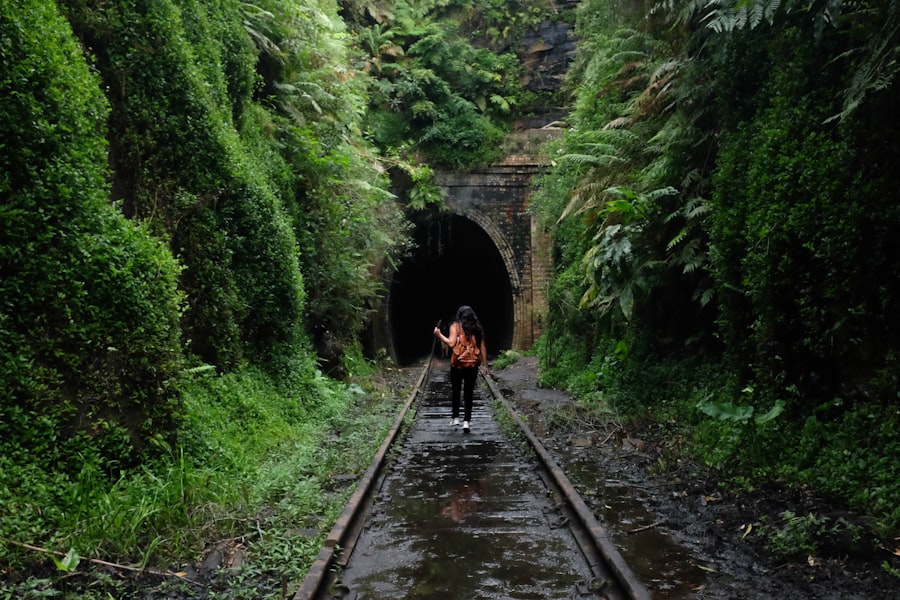The Drake Passage, a body of water that separates South America from Antarctica, is renowned for its tumultuous seas and unpredictable weather. Stretching approximately 800 kilometers (500 miles) from Cape Horn to the Antarctic Peninsula, it serves as a critical maritime route for vessels venturing to the southernmost continent. The passage is named after Sir Francis Drake, the English explorer who navigated these waters in the late 16th century.
Its significance extends beyond mere geography; it is a vital ecological zone where the cold waters of the Southern Ocean meet the warmer waters of the Atlantic, creating a unique marine environment. Navigating the Drake Passage is often considered a rite of passage for adventurers and researchers alike. The waters are known for their strong currents and high waves, which can make crossing both exhilarating and daunting.
The passage is not only a physical barrier but also a symbolic one, representing the transition from the familiar landscapes of South America to the stark, pristine wilderness of Antarctica. For many travelers, the journey through the Drake Passage is an integral part of their Antarctic experience, offering a glimpse into the raw power of nature and the beauty of remote landscapes.
Key Takeaways
- The Drake Passage is a body of water between South America’s Cape Horn and the South Shetland Islands of Antarctica, known for its rough seas and challenging sailing conditions.
- Preparing for the journey across the Drake Passage requires packing appropriate clothing, seasickness medication, and being mentally prepared for potentially rough seas.
- Weather and sea conditions in the Drake Passage can be unpredictable and extreme, with strong winds and high waves, making it important to be cautious and prepared for the journey.
- Wildlife spotting in the Drake Passage is a highlight of the journey, with opportunities to see various species of seabirds, whales, and other marine life.
- Safety measures, including following the instructions of the crew, wearing a life jacket, and staying inside during rough weather, are crucial for a safe passage across the Drake Passage.
Preparing for the Journey
Preparation for a journey across the Drake Passage requires careful planning and consideration. Travelers must ensure they have the appropriate gear to withstand the harsh conditions that can arise during the crossing. Layering clothing is essential, as temperatures can fluctuate dramatically.
Waterproof outer layers, thermal undergarments, and sturdy footwear are crucial for comfort and protection against the elements. Additionally, packing essentials such as sunscreen, sunglasses, and seasickness medication can significantly enhance the experience. Beyond physical preparations, mental readiness is equally important.
The Drake Passage is notorious for its rough seas, and travelers should be prepared for potential discomfort during the crossing. Familiarizing oneself with the expected conditions can help mitigate anxiety. Many travelers find it beneficial to engage in discussions with seasoned adventurers or guides who have crossed the passage before.
This exchange of knowledge can provide valuable insights into what to expect and how to cope with any challenges that may arise.
Weather and Sea Conditions

The weather in the Drake Passage is notoriously unpredictable, characterized by rapidly changing conditions that can shift from calm to chaotic in a matter of hours. The region is influenced by various climatic factors, including strong winds and ocean currents, which contribute to its reputation as one of the roughest seas in the world. Travelers should be prepared for everything from sunny skies to torrential rain and high waves.
Understanding these dynamics is crucial for anyone planning to cross this formidable stretch of water. Sea conditions can vary significantly depending on the time of year and prevailing weather patterns. During the summer months, typically from November to March, conditions tend to be more favorable for crossing.
However, even during this period, travelers may encounter rough seas and strong winds.
Being mentally prepared for potential delays or changes in itinerary can help ensure a smoother experience.
Wildlife Spotting
| Location | Number of Species | Popular Animals |
|---|---|---|
| Amazon Rainforest | 1,300 | Jaguar, Sloth, Macaw |
| African Savannah | 250 | Lion, Elephant, Giraffe |
| Great Barrier Reef | 1,500 | Turtle, Shark, Clownfish |
One of the most enchanting aspects of crossing the Drake Passage is the opportunity to observe diverse wildlife that inhabits these waters. The passage serves as a migratory route for various species, including whales, seals, and seabirds. Travelers may be fortunate enough to spot majestic humpback whales breaching the surface or playful orcas gliding through the waves.
The sight of these magnificent creatures in their natural habitat adds an exhilarating dimension to the journey. Birdwatchers will also find delight in the avian life that thrives in this region. Species such as albatrosses, petrels, and skuas are commonly seen soaring above the waves.
The sight of a wandering albatross gracefully gliding on ocean breezes is a highlight for many travelers. Engaging with knowledgeable guides on board can enhance wildlife spotting experiences, as they provide insights into animal behavior and ecology, enriching travelers’ understanding of this unique ecosystem.
Safety Measures
Safety is paramount when traversing the Drake Passage, given its reputation for unpredictable conditions. Vessels operating in these waters are equipped with advanced navigation systems and safety equipment to ensure passenger security. Before embarking on a journey, travelers should familiarize themselves with safety protocols outlined by their tour operators.
This includes understanding emergency procedures and knowing how to use safety gear such as life jackets. Additionally, it is essential for travelers to heed advice from experienced crew members regarding sea conditions and personal safety measures. Staying informed about weather updates and being aware of one’s surroundings can significantly enhance safety during the crossing.
Those prone to seasickness should take preventive measures seriously, as feeling unwell can detract from the overall experience. By prioritizing safety and being prepared for potential challenges, travelers can enjoy their journey across this remarkable passage with greater peace of mind.
Activities on Board

While crossing the Drake Passage can be an adventure in itself, many vessels offer a variety of activities on board to keep passengers engaged during their journey. Educational lectures led by experts in marine biology, geology, and Antarctic history provide valuable insights into the region’s unique environment and significance. These sessions often include multimedia presentations that captivate audiences and deepen their appreciation for what lies ahead.
In addition to educational opportunities, many ships feature observation decks where travelers can enjoy panoramic views of the ocean and sky. Photography enthusiasts will find ample opportunities to capture stunning seascapes and wildlife moments. Some vessels also offer guided excursions such as zodiac cruises or kayaking experiences once they reach calmer waters near Antarctica.
These activities allow travelers to immerse themselves in the breathtaking beauty of their surroundings while fostering a sense of adventure.
Crossing the Antarctic Convergence
As vessels navigate through the Drake Passage, they eventually encounter a significant ecological boundary known as the Antarctic Convergence. This natural phenomenon marks a transition zone where cold Antarctic waters meet warmer sub-Antarctic waters, creating a rich area of nutrient mixing that supports diverse marine life. Crossing this boundary is often an exhilarating moment for travelers, as it signifies their approach to Antarctica.
The Antarctic Convergence plays a crucial role in regulating ocean temperatures and influencing global climate patterns. For those aboard ships traversing this area, it offers an opportunity to witness firsthand how these environmental dynamics shape marine ecosystems. Travelers may observe changes in wildlife activity as they cross this boundary, with an increase in seabird sightings and potential whale encounters as they enter nutrient-rich waters.
Historical Significance of the Passage
The Drake Passage holds profound historical significance as a route explored by early navigators and explorers seeking new trade routes and territories. Sir Francis Drake’s expedition in the late 1500s marked one of the first recorded crossings of this treacherous waterway, paving the way for future exploration of Antarctica. The passage has since become synonymous with adventure and discovery, attracting explorers from around the globe.
In addition to its exploration history, the Drake Passage has played a vital role in scientific research and environmental studies. The region’s unique marine ecosystems have drawn researchers interested in understanding climate change impacts and biodiversity conservation efforts. As travelers embark on their journeys across this historic passage, they become part of a legacy that continues to inspire exploration and scientific inquiry.
Cultural Experiences
Traveling through the Drake Passage offers more than just breathtaking landscapes; it also provides opportunities for cultural enrichment. Many expedition cruises incorporate elements of local culture into their itineraries, allowing travelers to engage with indigenous communities or learn about historical expeditions that shaped our understanding of Antarctica. These cultural experiences foster a deeper connection to the region’s history and its people.
Onboard activities may include presentations by guest speakers who share stories about their own experiences in Antarctica or discussions about indigenous cultures in South America. Such interactions enrich travelers’ understanding of how human history intertwines with this remote environment. By embracing cultural experiences during their journey, travelers gain valuable perspectives that enhance their appreciation for both nature and humanity’s relationship with it.
Arrival in Antarctica
The moment of arrival in Antarctica is often met with awe and excitement as travelers catch their first glimpse of this pristine wilderness. Towering icebergs, dramatic mountain ranges, and expansive glaciers create a breathtaking backdrop that leaves an indelible mark on all who visit. The stark beauty of Antarctica stands in stark contrast to the bustling world left behind, offering a sense of tranquility that is hard to replicate elsewhere.
Upon arrival, travelers may have opportunities to disembark onto land via zodiacs or small boats, allowing them to explore iconic sites such as Deception Island or Paradise Bay. Guided excursions provide insights into local wildlife habitats while emphasizing conservation efforts aimed at preserving this fragile ecosystem. For many adventurers, stepping foot on Antarctic soil represents not just a geographical milestone but also a profound connection to one of Earth’s last great frontiers.
Tips for a Smooth Passage
To ensure a smooth passage across the Drake Passage, travelers should consider several practical tips before embarking on their journey. First and foremost, staying informed about weather conditions is crucial; checking forecasts regularly can help set realistic expectations regarding sea conditions during transit. Additionally, packing wisely—focusing on layering clothing—can enhance comfort throughout varying temperatures encountered during travel.
Engaging with fellow passengers can also enrich the experience; sharing stories and tips fosters camaraderie among those embarking on this adventure together. Finally, maintaining an open mind and embracing spontaneity will allow travelers to fully appreciate every moment spent crossing this remarkable passage—whether it be witnessing wildlife encounters or simply enjoying breathtaking views along the way. In conclusion, crossing the Drake Passage is an adventure filled with challenges and rewards alike.
By embracing safety measures while engaging in onboard activities and cultural experiences along the way, travelers can create lasting memories that will resonate long after they return home from this extraordinary expedition.
If you’re planning a journey through the Drake Passage, you might find it helpful to read more about the experiences and tips shared by seasoned travelers. A related article that could provide valuable insights is available on MyGeoQuest. This article delves into the challenges and wonders of navigating this infamous stretch of water, offering advice on how to prepare for the voyage. For more detailed information, you can check out the article by visiting this link.
WATCH NOW! Drake Passage: Earth’s Deadliest Waters Revealed
FAQs
What is the Drake Passage?
The Drake Passage is the body of water between the southern tip of South America and the northern tip of the Antarctic Peninsula. It is known for its rough seas and challenging sailing conditions.
Why is traveling through the Drake Passage significant?
Traveling through the Drake Passage is significant because it is the shortest route from South America to Antarctica. It is also a renowned destination for wildlife viewing and offers a unique experience for adventurous travelers.
What are the travel options for crossing the Drake Passage?
Travel options for crossing the Drake Passage include expedition cruises, research vessels, and occasionally private yachts. Most travelers opt for expedition cruises, which offer a comfortable and safe way to experience the passage.
What is the best time of year to travel through the Drake Passage?
The best time to travel through the Drake Passage is during the austral summer, which runs from November to March. This is when the weather is relatively milder and wildlife sightings are at their peak.
What should travelers expect during a journey through the Drake Passage?
Travelers should expect rough seas, strong winds, and potentially challenging sailing conditions. However, they can also expect breathtaking scenery, abundant wildlife, and a sense of adventure unlike any other.
